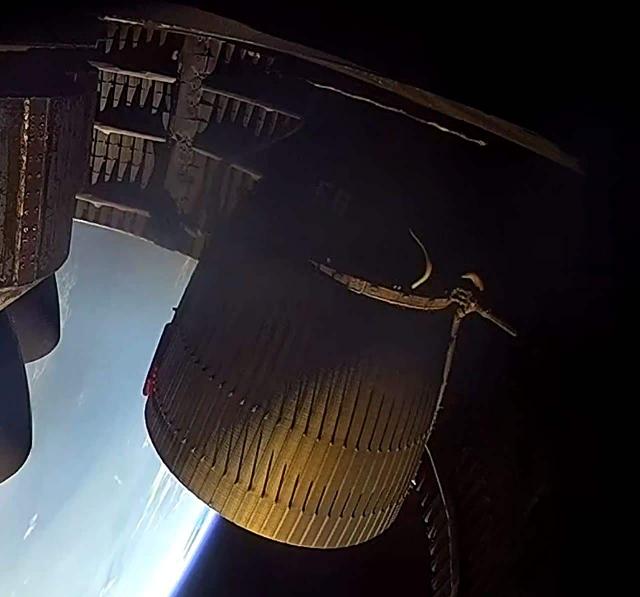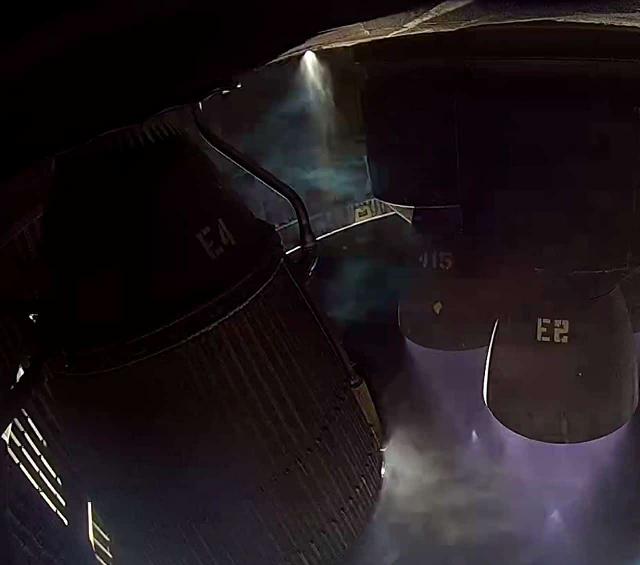For the third time in a row, the tests of the second modification of Starship were unsuccessful. Moreover, unlike the previous two cases, this time even the first stage could not work properly. It seems that SpaceX was unable to correctly identify the causes of the two previous partial failures, so the measures taken to fix the technical problems did not yield results.
Today, on May 28, 2025, at 2.36 a.m. Moscow time, Elon Musk's company conducted the ninth test flight of Starship. This happened after a number of changes in the design of the engine compartment made due to the explosions of the Starship spacecraft (also known as the second stage of the Starship system) in the seventh (January 2025) and eighth (March) launches of the same system. A few hours before launch, Elon Musk, SpaceX's chief engineer, claimed that
"We have an 80 percent chance — I don't want to tempt fate, I wanted to say 90 percent — that we have solved these problems [which led to the explosions of Starship in the two previous launches]."
From his point of view, one of the main problems that led to those two explosions was the insufficient tightening of the bolts connecting the combustion chamber to the nozzle head (responsible for supplying fuel) of the rocket engine. As a result, after starting the engines, the bolts were additionally loosened, which caused fuel (methane) and oxidizer (oxygen) to leak into the engine compartment, which led to a fire. The latter was clearly visible on the video of the seventh and eighth flights (SpaceX was broadcasting live from the engine compartment).

The Gorenje and its consequences were visible on the broadcast from the engine compartment of the first stage this time too.
Image source: SpaceX
In practice, it turned out differently. The first stage, which had already flown in January 2025, suffered an explosion after starting the engines for final braking, simulating the process of landing on the tower, possibly due to a leak of fuel components into the engine compartment. The second stage was able to go into space, into an open orbit, but once there, it lost its orientation. The second stage ship began to spin, which meant that it could not survive re-entry into the atmosphere.
The second stage of the Starship has thermal insulation tiles on only one side (to save weight), and it enters the atmosphere with the same side when braking before landing. When you lose orientation and rotate, the friction against the air no longer heats the tiles, but the entire structure, which means that its combustion is inevitable. This happened about the 47th minute of the flight.
It was not possible to launch eight mock-ups of Starlink satellites during their stay in space. The reason was the incomplete opening of the exterior doors. Although the latter is likely in case of loss of orientation and spinning of the ship (it prevents opening), the system needs to be completed in the future, since going outside in case of loss of orientation may be desirable in manned flights.

Purging the engine compartment with nitrogen allowed the second stage to reach space, rather than exploding in the atmosphere, as in January and March. But she will not be able to return to Earth in a controlled manner: more significant alterations are needed here.
Image source: SpaceX
Note that the likely cause of the problems is changes in the design of Starship Block 2 (that is, its second modification) in comparison with Starship Block 1. The latter successfully flew, and its second—stage spacecraft survived atmospheric entry and was able to land in the planned area. Theoretically, the changes in the second stage should have improved the safety of the propulsion systems. For example, SpaceX engineers installed vacuum housings on the pipelines leading to the engines from the fuel component tanks.
In practice, it turned out differently: fires in the engine compartment have become the norm. In this, the third flight of Starship Block 2, they are also visible in the video. It is also easy to see the active operation of the fire suppression system, which was installed based on the experience of the first two flights of Starship Block 2. Such a system purges the engine compartment with nitrogen, displacing fuel components from there. But it only minimizes gorenje and cannot prevent it completely.
What is important is that when the engines turn off, the fire suppression system turns off too — this is logical, since it does not have an infinite supply of nitrogen. But immediately after that, the leak from the pipelines did not go away, and methane and oxygen are still leaking into the engine compartment, creating an explosion hazard. It is possible (although it is not yet clear) that the first stage also had such a leak, which led to its explosion during an attempt to brake in the air.
The overall picture after the trials is not very happy. Yes, Starship reused its first stage for the first time, and yes, its second stage was able to go into space. But the leak in the fuel components has not been eliminated and, as it is now clear, it did not occur because the bolts in the engines were tightened too loosely. The specific causes of the leak may vary. As we have already written, one of the likely ones is harmonic vibrations of one kind or another during flight. They can create heavy loads on fuel pipelines and even fluctuations in fuel pressure "at the inlet" to the engine. In such cases, rocket engines enter low-frequency instability, and the resulting fluctuations can easily disrupt the tightness of the fuel pipes, triggering its leakage in serious volumes.
Full information about the incident is currently available only to SpaceX, but it is still unclear how clear it is even within the company. Shanna Dyess, chief engineer for Starship at SpaceX, described her impressions of the launch ambiguously: "I feel both relieved and a little disappointed. Everything could have gone better today, but it could have been much worse."
If the development had not been led by Elon Musk, who was insensitive to unsuccessful launches, it could have been curtailed by now. In this sense, the example of the Soviet N-1 is indicative, an extremely efficient rocket that has a lot in common with Starship (conscious multi-propulsion, hot separation of stages, supercooling of fuel): After four failures, the Soviet leadership closed the project and buried two ready-made rockets in the excavation, although all its developers were confident of the success of the next, fifth flight.
In the USA, in the 1950s and 60s, after a similar series of failures, von Braun's rocket projects were not closed. But even there, tests lasting dozens of launches would be difficult to imagine. Meanwhile, at least another 10-12 launches will be required to finalize Starship. And in any case, it's hard to imagine it earlier than 2026.
Alexander Berezin

